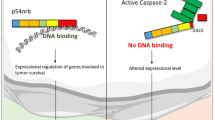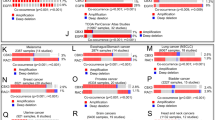Abstract
hTID1, a human homologue of Drosophila tumor suppressor, I(2)tid regulates the release of cytochrome c from mitochondria and subsequent alteration of caspase-3 activity on apoptosis induced by exogenous stimuli, such as tumor necrosis factor-α and mitomycin C. To search for an interacting molecule with hTid1, we applied two-hybrid yeast screening and isolated a novel gene, which encodes a 46 kDa protein of 373 residues. Within the deduced amino acid sequence, a region showing homology to the Ring Finger domain of X-linked inhibitor of apoptosis protein was identified and the gene was designated as hRFI, standing for human Ring Finger homologous to IAP type. A 2.0 kb hRFI transcript was ubiquitously expressed in all human tissues as well as several cancer cell lines examined. Northern blot analysis showed that in 70% (14 out of 20) of esophageal cancer patients, expression of hRFI in cancerous regions was two or more times higher than in the corresponding normal tissues. HeLa cells transfected with hRFI construct exhibited a tendency to resist TNF-α induced apoptosis, suggesting an anti-apoptotic function of the hRFI product. Finally, hRFI protein was shown to be cleaved within the DEDD sequence spanning residues 230–233 by caspase-3 during the apoptotic induction.
This is a preview of subscription content, access via your institution
Access options
Subscribe to this journal
Receive 50 print issues and online access
$259.00 per year
only $5.18 per issue
Buy this article
- Purchase on Springer Link
- Instant access to full article PDF
Prices may be subject to local taxes which are calculated during checkout








Similar content being viewed by others
References
Ambrosini G, Adida C, Altieri DC . 1997 Nature Med. 3: 917–921
Birnbaum MJ, Clem RJ, Miller LK . 1994 J. Virol. 68: 2521–2528
Chen Z, Naito M, Hori S, Mashima T, Yamori T, Tsuruo T . 1999 Biochem. Biophys. Res. Commun. 264: 847–854
Clem RJ, Fechheimer M, Miller LK . 1991 Science 254: 1388–1390
Crook NE, Clem RJ, Miller LK . 1993 J. Virol. 67: 2168–2174
Deveraux QL, Takahashi R, Salvesen GS, Reed JC . 1997 Nature 388: 300–304
Deveraux QL, Roy N, Stennicke HR, Van Arsdale T, Zhou Q, Srinivasula SM, Alnemri ES, Salvesen GS, Reed JC . 1998 EMBO J. 17: 2215–2223
Duckett CS, Nava VE, Gedrich RW, Clem RJ, Van Dongen JL, Gilfillan MC, Shiels H, Hardwick JM, Thompson CB . 1996 EMBO J. 15: 2685–2694
Hatta Y, Takeuchi S, Yokota J, Koeffler HP . 1997 Br. J. Cancer 75: 1256–1262
Hay BA, Wassarman DA, Rubin GM . 1995 Cell 83: 1253–1262
Kozak M . 1983 Microbiol. Rev. 47: 1–45
Liston P, Roy N, Tamai K, Lefebvre C, Baird S, Cherton-Horvat G, Farahani R, McLean M, Ikeda JE, MacKenzie A, Korneluk RG . 1996 Nature 379: 349–353
Merup M, Juliusson G, Wu G, Jansson M, Stellan B, Rasool O, Roijer E, Stenman G, Gahrton G, Einhorn S . 1997 Eur. J. Haematol. 58: 174–180
Pack SD, Karkera JD, Zhuang Z, Pak ED, Balan KV, Hwu P, Park WS, Pham T, Ault DO, Glaser M, Liotta L, Detera-Wadleigh SD, Wadleigh RG . 1999 Genes Chromosomes Cancer 25: 160–168
Rothe M, Pan MG, Henzel WJ, Ayres TM, Goeddel DV . 1995 Cell 83: 1243–1252
Roy N, Mahadevan MS, McLean M, Shutler G, Yaraghi Z, Farahani R, Baird S, Besner-Johnson A, Lefebvre C, Kang X, Salih M, Aubry H, Tamai K, Guan X, Ioannou P, Crawford TO, de Jong PJ, Surh L, Ikeda J-E, Korneluk RG, MacKenzie A . 1995 Cell 80: 167–178
Roy N, Deveraux QL, Takahashi R, Salvesen GS, Reed JC . 1997 EMBO J. 16: 6914–6925
Schilling B, De-Medina T, Syken J, Vidal M, Munger K . 1998 Virology 247: 74–85
Syken J, De-Medina T, Munger K . 1999 Proc. Natl. Acad. Sci. USA 96: 8499–8504
Takahashi R, Deveraux Q, Tamm I, Welsh K, Assa-Munt N, Salvesen GS, Reed JC . 1998 J. Biol. Chem. 273: 7787–7790
Uren AG, Pakusch M, Hawkins CJ, Puls KL, Vaux DL . 1996 Proc. Natl. Acad. Sci. USA 93: 4974–4978
Wolf BB, Green DR . 1999 J. Biol. Chem. 274: 20049–20052
Yang X, Khosravi-Far R, Chang HY, Baltimore D . 1997 Cell 89: 1067–1076
Yang Y, Fang S, Jensen JP, Weissman AM, Ashwell JD . 2000 Science 288: 874–877
Yin X, Rozakis-Adcock M . 2001 Gene 278: 201–210
Acknowledgements
Dr H Ishii has to be specially acknowledged for his advice and comments on this work. We are grateful to Mr H Alder for sequencing analyses.
Author information
Authors and Affiliations
Corresponding author
Additional information
AB084914.
Rights and permissions
About this article
Cite this article
Sasaki, S., Nakamura, T., Arakawa, H. et al. Isolation and characterization of a novel gene, hRFI, preferentially expressed in esophageal cancer. Oncogene 21, 5024–5030 (2002). https://doi.org/10.1038/sj.onc.1205627
Received:
Revised:
Accepted:
Published:
Issue Date:
DOI: https://doi.org/10.1038/sj.onc.1205627
Keywords
This article is cited by
-
Putting human Tid-1 in context: an insight into its role in the cell and in different disease states
Cell Communication and Signaling (2022)
-
Comparison of the expression profile of apoptosis-associated genes in rheumatoid arthritis and osteoarthritis
Rheumatology International (2008)
-
Caspase inhibitors: viral, cellular and chemical
Cell Death & Differentiation (2007)
-
Overexpression of hRFI inhibits 5-fluorouracil-induced apoptosis in colorectal cancer cells via activation of NF-κB and upregulation of BCL-2 and BCL-XL
Oncogene (2006)
-
Depletion of physiological levels of the human TID1 protein renders cancer cell lines resistant to apoptosis mediated by multiple exogenous stimuli
Oncogene (2004)



